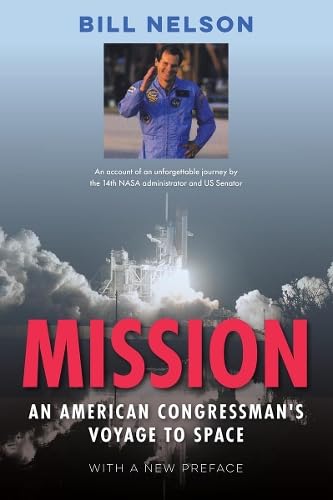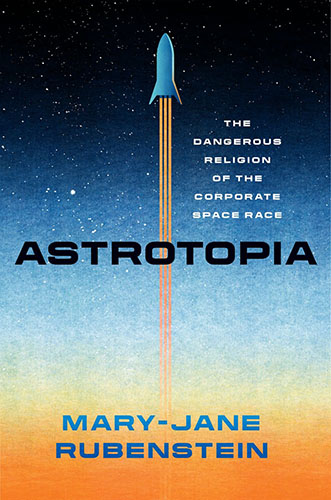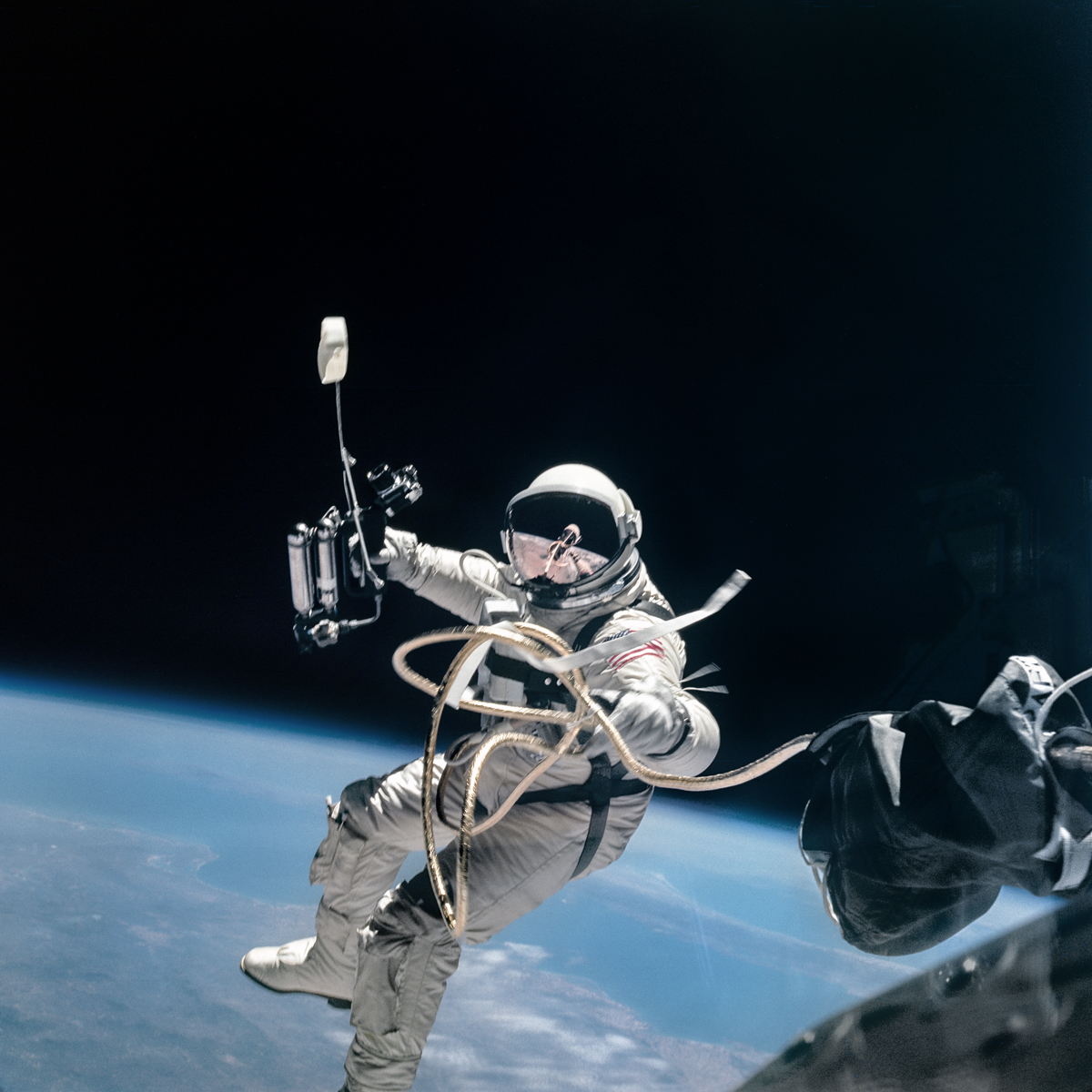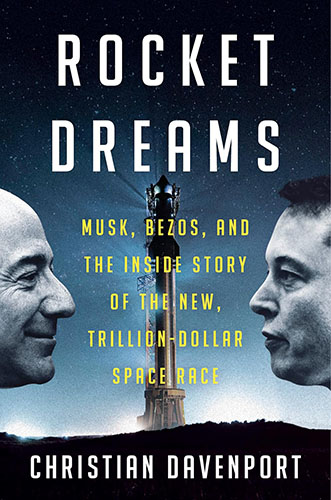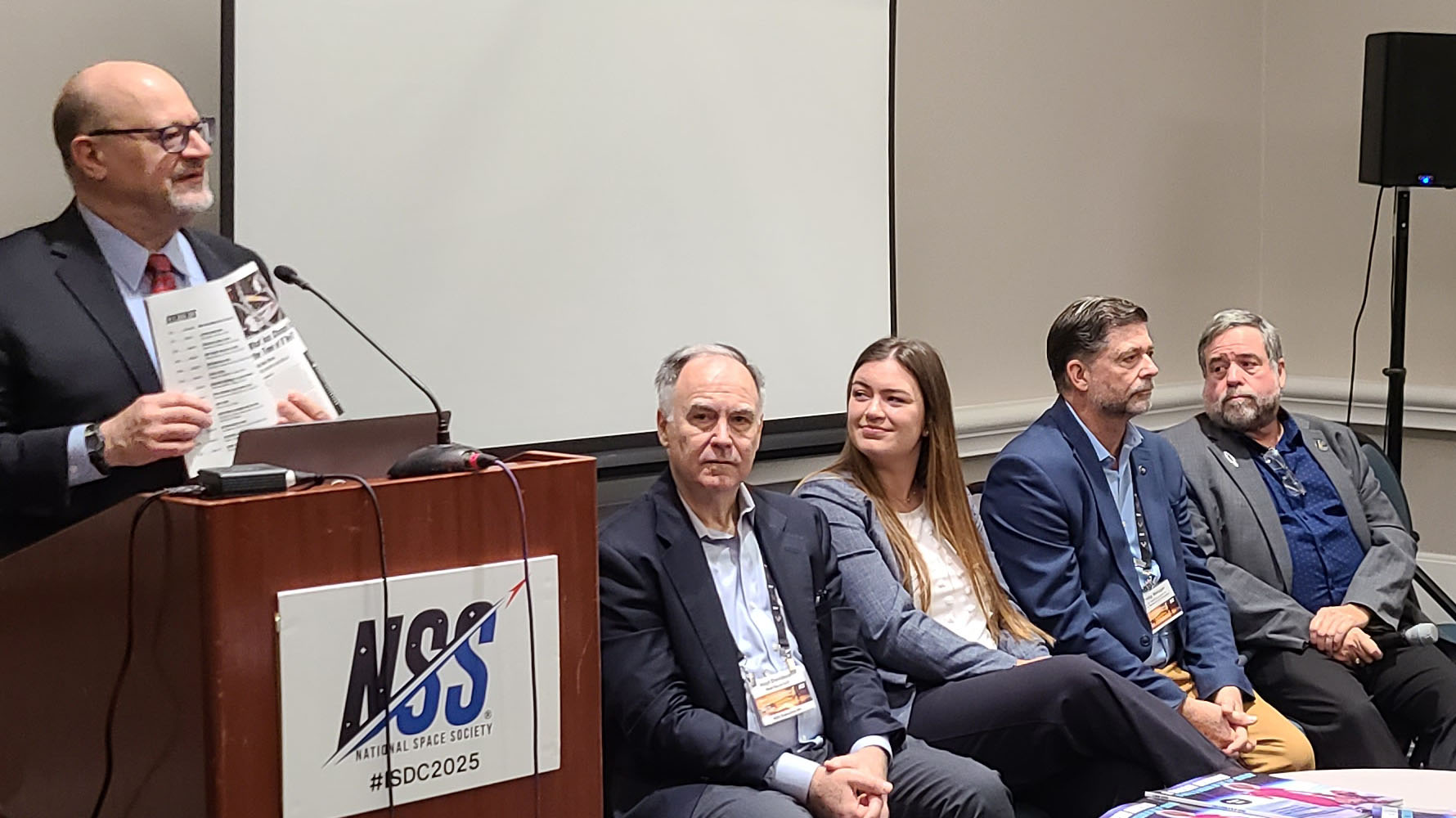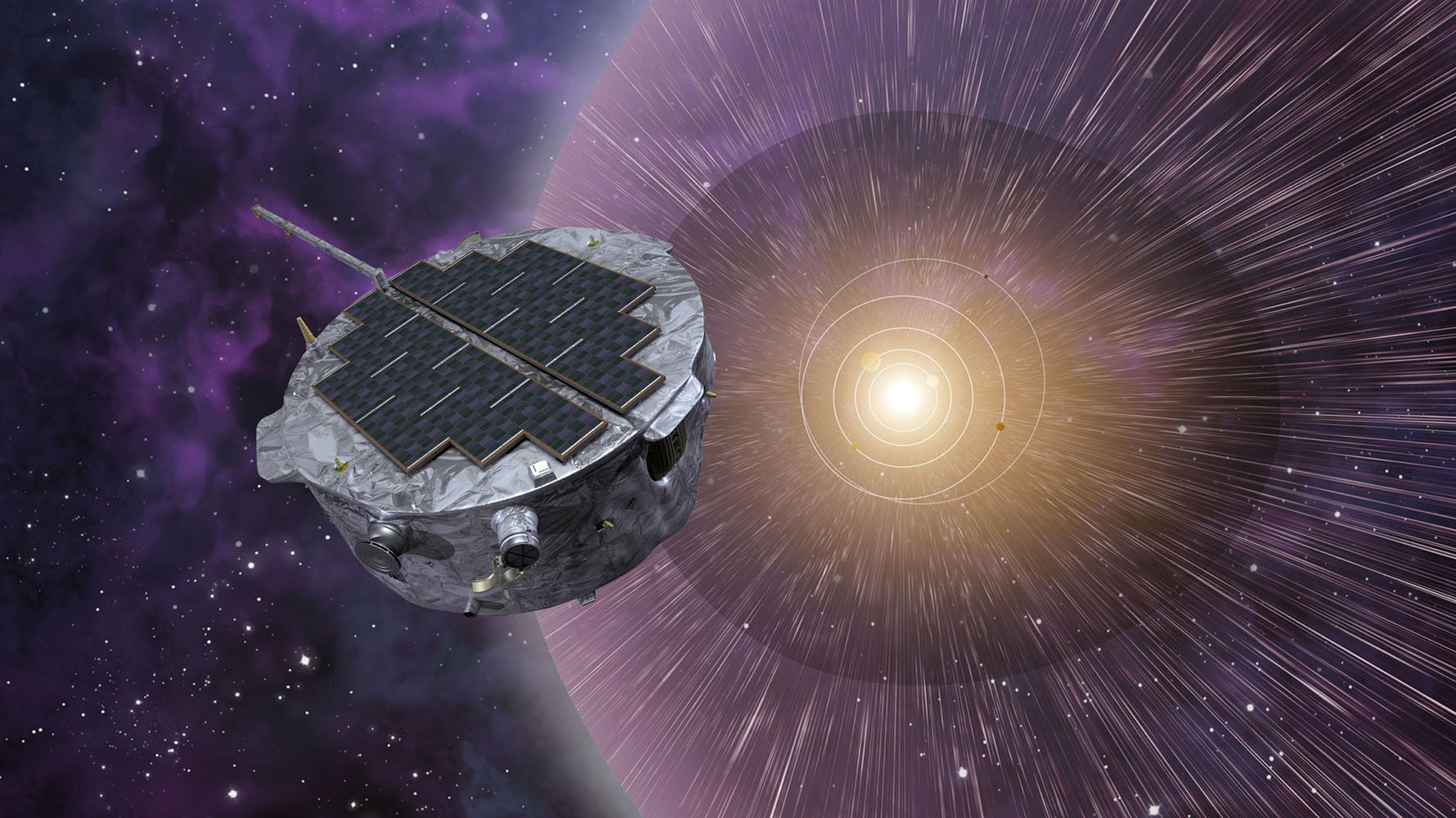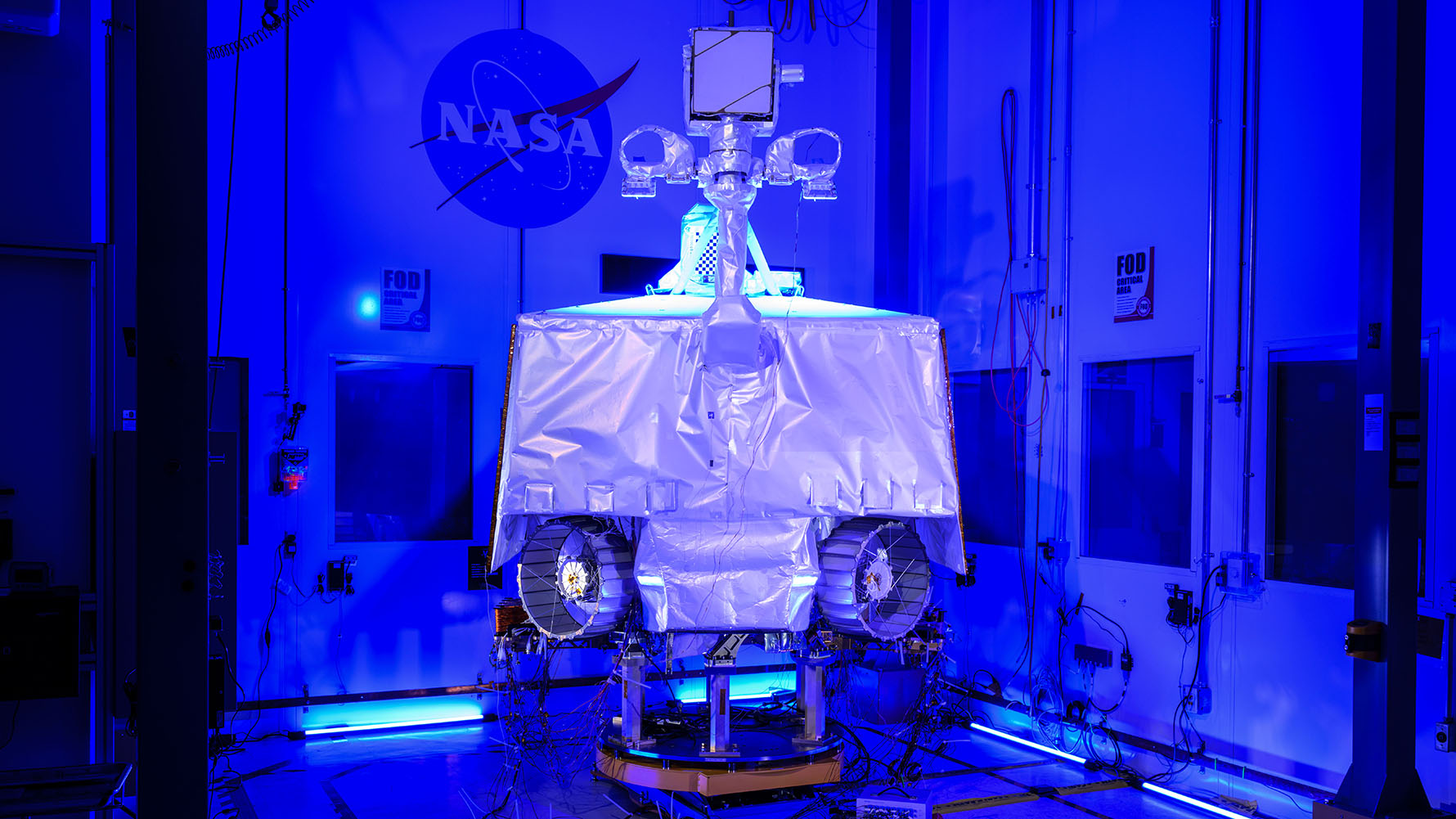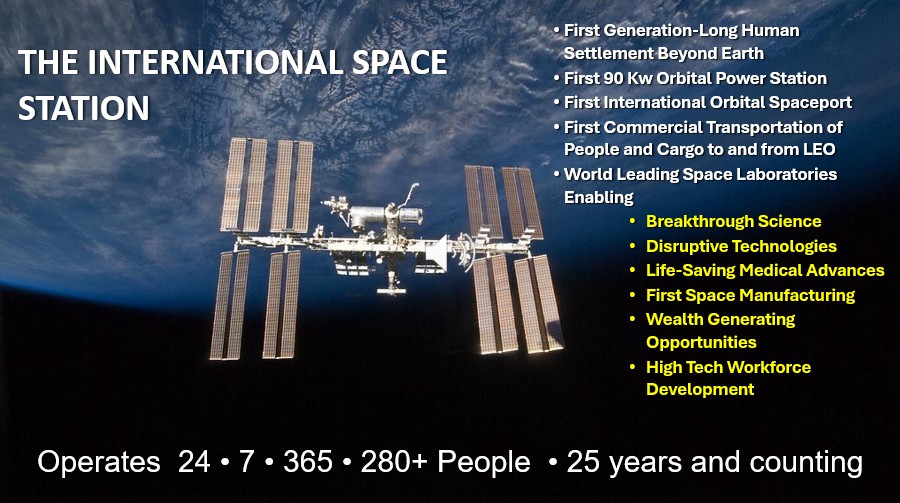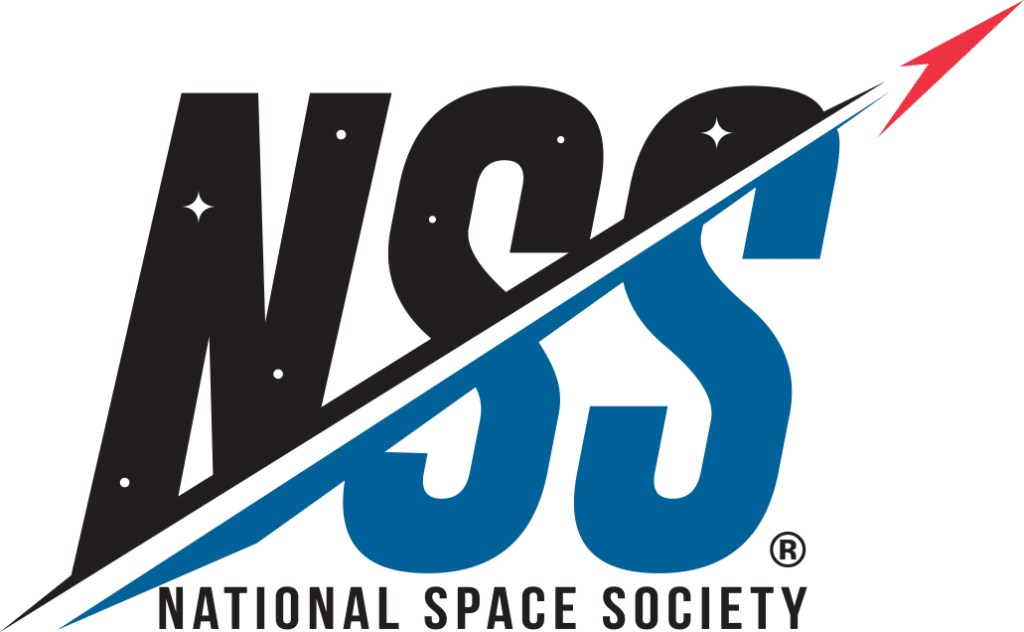Category: Nonfiction
Reviewed by: Susan Raizer
Title: Mission: An American Congressman’s Voyage to Space
Author: Bill Nelson
Format: Paperback/Kindle
Pages: 317
Publisher: University of Florida Press
Date: September 2025
Retail price: $30.00/$19.99
ISBN: 978-1683405511
Find this book
Mission: An American Congressman’s Voyage to Space, originally released in 1988, was recently republished with a new preface. The author is a person familiar to many space enthusiasts: Florida congressman and astronaut Bill Nelson. Despite being an updated book, there is a surprising lack of information about his tenure as NASA Administrator.
Nelson’s association with NASA goes back many years before he was picked for a flight on the space shuttle. A native of Melbourne, FL, his grandparents farmed 160 acres of swamp and palmettos on Merritt Island, near Titusville. The land eventually was sold and is at the north end of what was the runway for the Space Shuttle. According to his publisher, he “represented the state for 18 years in the US Senate and for 12 years in the US House of Representatives” and “served as chairman of the Subcommittees on Science and Space in both the Senate and the House.”
While he was in the Senate, NASA wanted to fly non-professional astronauts on the space shuttle. This included politicians. Republican Senator Jake Garn was given the opportunity to fly on a shuttle mission, after which the NASA Administrator, in an effort towards bipartisanship, requested a Democrat. Bill Nelson put his name in and was selected as a Payload Specialist in 1985 to become a member of the crew of Columbia on mission STS-61C. The mission was delayed four times due to technical and weather issues. STS-61C was launched on January 12, 1986. His duties included performing medical experiments on himself and growing crystals in space. He was also the first American to perform a stress test in space. Nelson brought a tape recorder along on the mission to make sure he had all his facts correct. The information on the tapes was later incorporated into this book. After a six-day mission, Columbia landed at Edwards Air Force Base.
Most NSS members have likely read many astronaut biographies. Nelson’s story is unique in how he balanced astronaut training while serving in Congress. At NASA, he learned spaceflight jargon and mastered tasks like surviving a ride on the “vomit comet.” Other times, he had to commute back to Washington, DC, for critical votes. Nelson also speaks fondly of the Challenger crew. Curiously, he was almost assigned to this tragic flight instead of the STS-61C mission aboard Columbia.
The book’s new preface discusses many space milestones that happened since Nelson’s spaceflight. He speaks about international cooperation in space, going back to the Moon with the Artemis program, and maybe going to Mars. He also speaks about how spaceflight can create economic incentives and combat climate change. But he did not speak about being NASA Administrator.
This book is highly recommended. Nelson is very passionate about space exploration. His writing is chatty and informative. There are lots of color and black photos. It was interesting to learn how his grandparents used to farm on what is now the Kennedy Space Center. His time as a Florida congressman also made for interesting reading. I would have appreciated more information about Nelson’s role as NASA Administrator.
© 2025 Susan Raizer
